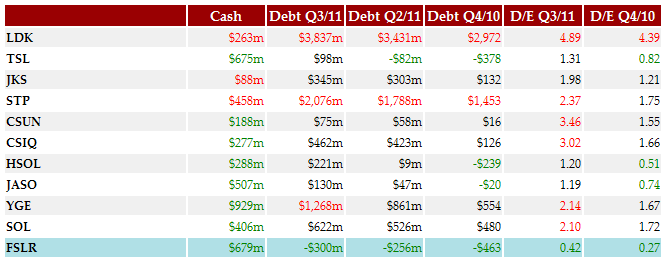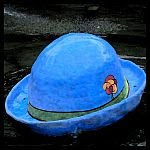After two years of turmoil in the market for China-based small cap stocks most of the companies find themselves in a dire situation. Their stock price has collapsed and the company's market value is only a fraction of what it was before RINO's demise. The trading volume for most stocks has collapsed as well and there is almost no chance to raise capital anymore. At the same time the cost of being a public company has risen significantly, and probably will continue to rise from current levels. That leaves very many Chinese companies unhappy with their public status as the costs by far outweigh the benefits and many U.S.-traded firms no longer wish to be a public company.
Most of the expenses of being a public company arise from the reporting requirements with the SEC. The manadatory Form 10-K (annually) requires that the company's financial results are audited by an independent accounting firm, additionally the quarterly Form 10-Q's have to be reviewed by this auditor. Those forms also trigger legal fees, technical expenses as formatting them for the EDGAR system, and the company has to pay professional staff, training them in U.S. GAAP accounting and Sarbanes-Oxley compliance. Last but not least a Chief Financial Officer is usually required, a senior management position most small companies would not fill if they weren't publicly traded.
Auditing costs have risen significantly over the past three years as the market turmoil and increased scrutiny led to an increased risk of auditing a Chinese company for most accounting firms.

Other expenses arising from a company's public status are compensation for independent directors, spending more capital on investor relations in an effort to distinguish itself from other Chinese companies in such a hostile environment, and increasingly also legal costs to defend the company against short seller allegations and class action suits. After years of trouble and only small benefits from their public status many companies now simply wish to reduce these costs by giving up on their public status, ceasing to be a fully reporting company.
We have seen many "Going Private" transactions or proposals over the past twelve months - more on this in one of the next articles in this series - but not every small company can raise the capital necessary to repurchase their stock from its public shareholders. That leaves most companies who wish to stop being a public company only one option: to stop filing quarterly and annual reports with the SEC, also known as "Going Dark," without buying back its shares.
Form 15
There are basically two ways of "Going Dark," the orderly and legal way of deregistering its shares by filing a Form-15 with the SEC, and the illegal way of simply disappearing from the public eye. However, not every company is allowed to file a Form-15 and the SEC has to accept the filing for it to become effective. The main requirement for a Form-15 is that the company has less than 300 shareholders of record, or less than 500 shareholders and its net assets for each of the last three fiscal years was less than $10 million. Additionally, with very few exceptions, the SEC requires that the company is current with its reporting obligations at the time of a Form-15 submission.
Here is a list of Chinese companies that were "Going Dark" by filing a Form-15:
2012-10-04 -- CHME China Medicine
2012-08-31 -- CCGY China Clean Energy
2012-08-13 -- ZSTN ZST Digital Networks
2012-06-29 -- AGSO AgriSolar Solutions
2012-05-11 -- LTUS Lotus Pharmaceuticals
2012-04-20 -- ONBI One Bio Corp
2012-03-30 -- ALIF Artificial Life
2012-03-30 -- EESC Eastern Environment Solutions
2012-03-29 -- CSNH China Shandong Industries
2012-03-13 -- XNYH Xinyinhai Technology
2012-02-09 -- CNER China New Energy Group
2012-02-08 -- SGLA Sino Green Land
2011-12-30 -- DFEL China TMK Battery Systems
2011-11-14 -- SRRY Sancon Resources Recovery
2011-10-20 -- CIWT China Industrial Waste Management
2011-06-20 -- CRJI China Runji Cement
2011-05-18 -- GHNA GHN Agrispan Holding
2011-01-13 -- RINO RINO International
2011-01-03 -- ENHD Energroup Holdings
Those stocks are still quoted on the pink sheets, and the companies still have certain responsibilities to its public shareholders as they didn't buy back its stock. This includes maintaining a board of directors and holding annual shareholder meetings. If these "Form-15 Companies" wish to regain compliance in the future the SEC has the following regulation in place: "If the certification of termination on Form 15 is subsequently withdrawn or denied, the company must file all reports that would have been required if the Form 15 had not been filed."
Going Dark
It is much harder, if not impossible, to reactivate its stock in the future if the company has chosen to "go dark" illegally. Simply ignoring its reporting obligations might cause the SEC to take action, which might lead to its stock to become untradeable, even on the pink sheets. Still, the reasons for "going dark" might be the same as for "Form-15 Companies," it doesn't necessarily indicate fraud or criminal behaviour. Investors holding any of these stocks are encouraged to independently and persistently contact the company and find out as many of its reasons and future plans as possible.
There are many more Chinese small- and micro caps that are still traded on the OTC but face similar problems than those that were "going dark." Another group of possible "going dark" candidates can be found in the large number of companies that have seen their stock getting delisted from a senior exchange with little or no chance of regaining that listing. It pays off to take a close look at the filing history of these names and look out for possible warning signs.
Here is a comprehensive list of China-based companies that were "going dark" without filing a Form 15:
AKRK -- Asia Cork
(Performance Dec 31, 2010 to Sep 30, 2012: -97.95%)
2011-05-23 -- Last SEC Filing
2011-05-23 -- Last Quarterly/Annual Report: Q1/FY2011 ended March 31, 2011
BEER -- Tsingyuan Brewery
(Performance Dec 31, 2010 to Sep 30, 2012: -95.10%)
2012-04-02 -- Last SEC Filing
2012-02-10 -- Going Private Transaction indicated (loose plans)
2011-11-18 -- Last Quarterly/Annual Report: Q3/FY2011 ended September 30, 2011
BFAR -- BioPharm Asia
(Performance Dec 31, 2010 to Sep 30, 2012: -98.62%)
2011-06-24 -- Last SEC Filing
2011-02-16 -- CEO Appointment
2011-02-15 -- CEO Resignation
2011-02-14 -- Auditor Engagement
2011-01-30 -- CFO Appointment
2011-01-27 -- CFO Resignation
2011-01-20 -- Auditor Terminated
2010-11-22 -- Last Quarterly/Annual Report: Q3/FY2010 ended September 30, 2010
CAGM -- China Green Material
(Performance Dec 31, 2010 to Sep 30, 2012: -98.10%)
2012-04-02 -- Last SEC Filing
2012-03-27 -- Auditor Resignation
2011-11-21 -- Last Quarterly/Annual Report: Q3/FY2011 ended September 30, 2011
2011-07-13 -- Auditor Change
2011-04-27 -- Auditor Change
CGDI -- China Growth Development
(Performance Dec 31, 2010 to Sep 30, 2012: -95.84%)
2010-03-31 -- Last SEC Filing
2009-11-18 -- Last Quarterly/Annual Report: Q3/FY2009 ended September 30, 2009
CGPI -- China Redstone Group
(Performance Dec 31, 2010 to Sep 30, 2012: -99.54%)
2011-07-01 -- Last SEC Filing
2011-05-13 -- CFO Appointment
2011-04-22 -- CFO Resignation
2011-03-02 -- CFO Appointment
2011-03-02 -- CFO Resignation
2011-02-14 -- Last Quarterly/Annual Report: Q3/FY2011 ended December 31, 2010
CHBU -- China Agri-Business
(Performance Dec 31, 2010 to Sep 30, 2012: -95.62%)
2012-03-30 -- Last SEC Filing
2011-11-21 -- Last Quarterly/Annual Report: Q3/FY2011 ended September 30, 2011
CHNC -- China Infrastructure Construction
(Performance Dec 31, 2010 to Sep 30, 2012: -96.88%)
2012-04-20 -- Last SEC Filing
2012-04-20 -- Last Quarterly/Annual Report: Q3/FY2012 ended February 29, 2012
CKGT -- China Kangtai Cactus
(Performance Dec 31, 2010 to Sep 30, 2012: -75.73%)
2012-08-15 -- Last SEC Filing
2011-11-14 -- Last Quarterly/Annual Report: Q3/FY2011 ended September 30, 2011
CNOA -- China Organic Agriculture
(Performance Dec 31, 2010 to Sep 30, 2012: -96.98%)
2011-05-17 -- Last SEC Filing
2011-03-18 -- CFO Resignation
2011-03-18 -- CEO Resignation
2011-01-24 -- Auditor Engagement
2011-01-20 -- Auditor Resignation
2010-12-21 -- CFO Appointment
2010-12-21 -- CFO Resignation
2010-11-22 -- Last Quarterly/Annual Report: Q3/FY2010 ended September 30, 2010
CNPI -- China Power Technology
(Performance Dec 31, 2010 to Sep 30, 2012: n/a)
2011-08-09 -- Last SEC Filing
2011-06-10 -- CFO Resignation
2011-05-16 -- Last Quarterly/Annual Report: Q1/FY2011 ended March 31, 2011
CNVP -- China Environmental Protection
(Performance Dec 31, 2010 to Sep 30, 2012: -99.56%)
2012-09-24 -- Last SEC Filing
2011-08-11 -- Auditor Engagement
2011-01-21 -- Auditor Resignation
2010-08-23 -- Last Quarterly/Annual Report: Q3/FY2010 ended June 30, 2010
CRUI -- China RuiTai International
(Performance Dec 31, 2010 to Sep 30, 2012: -97.00%)
2012-03-30 -- Last SEC Filing
2011-11-14 -- Last Quarterly/Annual Report: Q3/FY2011 ended September 30, 2011
CSGH -- China Sun Group High-Tech
(Performance Dec 31, 2010 to Sep 30, 2012: -91.23%)
2012-06-25 -- Last SEC Filing
2012-06-19 -- CFO Resignation
2012-04-13 -- Last Quarterly/Annual Report: Q3/FY2012 ended February 29, 2012
CSGJ -- China Shuangji Cement
(Performance Dec 31, 2010 to Sep 30, 2012: -87.95%)
2011-03-31 -- Last SEC Filing
2010-11-22 -- Last Quarterly/Annual Report: Q3/FY2010 ended September 30, 2010
CSOL -- China Solar & Clean Energy
(Performance Dec 31, 2010 to Sep 30, 2012: -97.06%)
2012-08-09 -- Last SEC Filing
2012-08-06 -- CFO Resignation
2011-11-21 -- Last Quarterly/Annual Report: Q3/FY2011 ended September 30, 2011
EMDY -- Emerald Dairy
(Performance Dec 31, 2010 to Sep 30, 2012: -90.57%)
2011-12-01 -- Last SEC Filing
2011-10-26 -- Last Quarterly/Annual Report: Q2/FY2011 ended June 30, 2011
GCHT -- GC China Turbine
(Performance Dec 31, 2010 to Sep 30, 2012: -95.38%)
2012-08-15 -- Last SEC Filing
2012-02-22 -- CFO Resignation
2011-11-21 -- Last Quarterly/Annual Report: Q3/FY2011 ended September 30, 2011
2011-09-21 -- Auditor Change
GHII -- Gold Horse International
(Performance Dec 31, 2010 to Sep 30, 2012: -93.36%)
2012-06-30 -- CFO Contract expired
2012-05-16 -- Last SEC Filing
2012-05-10 -- Last Quarterly/Annual Report: Q3/FY2012 ended March 31, 2012
HFGB -- Huifeng Bio-Pharma
(Performance Dec 31, 2010 to Sep 30, 2012: -94.12%)
2011-08-12 -- Last SEC Filing
2011-08-09 -- Auditor Engagement
2011-04-15 -- Auditor Resignation
2010-11-15 -- Last Quarterly/Annual Report: Q3/FY2010 ended September 30, 2010
HSYT -- Home System Group
(Performance Dec 31, 2010 to Sep 30, 2012: -97.16%)
2012-04-02 -- Last SEC Filing
2012-03-08 -- Auditor Engagement
2011-12-13 -- Auditor Resignation
2010-11-15 -- Last Quarterly/Annual Report: Q3/FY2010 ended September 30, 2010
IDCX -- North China Horticulture
(Performance Dec 31, 2010 to Sep 30, 2012: -99.34%)
2012-04-02 -- Last SEC Filing
2011-11-21 -- Last Quarterly/Annual Report: Q3/FY2011 ended September 30, 2011
JADA -- Jade Art Group
(Performance Dec 31, 2010 to Sep 30, 2012: -89.45%)
2010-11-16 -- Last SEC Filing
2010-11-15 -- Last Quarterly/Annual Report: Q3/FY2010 ended September 30, 2010
LEGE -- Legend Media
(Performance Dec 31, 2010 to Sep 30, 2012: -50.00%)
2010-09-28 -- Last SEC Filing
2010-05-17 -- Last Quarterly/Annual Report: Q3/FY2010 ended March 31, 2010
LZEN -- Lizhan Environmental
(Performance Dec 31, 2010 to Sep 30, 2012: -91.74%)
2012-04-24 -- Last SEC Filing
2012-04-12 -- Last Quarterly/Annual Report: FY2011 ended December 31, 2011
PFGY -- Perfectenergy International
(Performance Dec 31, 2010 to Sep 30, 2012: -96.25%)
2012-08-01 -- Last SEC Filing
2012-04-01 -- CFO Resignation
2011-08-22 -- Last Quarterly/Annual Report: Q3/FY2011 ended June 30, 2011
RDBO -- Rodobo International
(Performance Dec 31, 2010 to Sep 30, 2012: -91.94%)
2011-12-30 -- Last SEC Filing
2011-08-15 -- Last Quarterly/Annual Report: Q3/FY2011 ended June 30, 2011
YYINE -- Yayi International
(Performance Dec 31, 2010 to Sep 30, 2012: -77.28%)
2012-08-15 -- Last SEC Filing
2012-04-13 -- CFO Resignation
2012-02-14 -- Last Quarterly/Annual Report: Q3/FY2012 ended December 31, 2011
Labels: China




